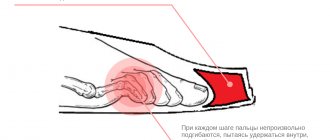General cleaning
It is not enough to simply wipe your shoes with a cloth and put them in the closet. There are 5-7 long months of heat and active insect life ahead. To prevent your favorite boots from deteriorating during this period, you must first clean them well.
Dirt on boots and traces of sweat on insulation are food for bacteria and fungus. In addition, “odorous” pollution attracts insects.
Therefore, you need to carefully clean your favorite pair before storing:
- It is necessary to wash the inside of the boots. To do this, use liquid detergents for wool. They rinse well and do not clog the material like powders and soaps.
- The insole should be properly removed before the procedure. It is replaced with a new one or washed separately.
- The detergent is diluted according to the instructions. The temperature of the soap solution should not exceed 30 degrees.
- Next, the solution is poured into the shoes and left for 5 minutes.
- They go through the inside of the boots with a brush.
- Rinse with clean water and dry.
- The outside of the shoes is cleaned with soft brushes, and suede and nubuck are cleaned with special cleaning foam.
Winter shoes, especially leather and suede, should not be in contact with water for too long. You need to wash them in 15-30 minutes.
Advice. If the inside of the boots is relatively clean, you can not wash them inside, but vacuum them and treat them with an antiseptic shoe spray.
Preparation for storage
A common mistake is to lightly wipe the dirt off the shoes and place them randomly in boxes. From such careless attitude, the leather cracks, gets scratched and by the next season the shoes become unusable.
Main stages of preparation for storage:
1. Cleaning from dirt. Dirt from the sole can be washed off with soapy water and a brush. Genuine leather is cleaned with warm water, suede and textiles with special cleansers. For washing, it is not recommended to use hard brushes or scrub the shoes vigorously so as not to scratch the surface. Laces and removable insoles are washed.
2. Then dry for 2-3 days. Do this away from radiators and heating devices. The shoes should dry naturally at room temperature.
3. Dried and clean shoes are carefully inspected for scuffs, scratches and defects. If the leather is worn, it can be painted with special paints. If the heels are worn out or the zipper is broken, it is better to take it to a workshop.
When the winter shoe season suddenly arrives, you won’t have to worry that they’re not ready.
Some note the beneficial effects of castor oil on the skin. Genuine leather tends to age and dry out. Oil saturates it with moisture and extends its service life. After application, the shoes are left at room temperature to absorb the oil for 1–2 days.
4. Next, boots and boots are lubricated with a special cream; an antibacterial spray can be applied to the inner surface.
5. After all procedures, the shoes are ready for packaging and storage.
It is best to clean after each contamination. Then at the end of the season it will be enough to dry and get rid of dust and fresh stains. Preparation takes several days, but with the onset of cold weather it will solve many problems.
Treatment with protective compounds
In summer, the shoe material can dry out, become hard, rough, and crack.
Natural insulation is often attacked by moths. To keep shoes looking fresh after seasonal storage, you need to:
- Treat the outside with a care product. Genuine leather and leatherette are rubbed with shoe polish. For suede and nubuck, aerosol products are used. Treatment prevents moisture loss and roughening.
- Use a moth repellent: special balls, sochettes, sprays. Modern drugs are odorless. For example, “Anti moth” or “Armol Expert” aerosols have virtually no odor, and at the same time repel moths for 5 months. You can process the boxes in which shoes will be stored.
Advice. If your shoes have lost their color, it's time to touch them up. You can use the services of a repair shop or purchase a can of shoe paint and perform the procedure yourself; small scratches can be painted over with a felt-tip pen.
How to store summer shoes
Summer shoes, sandals, slippers, ballet shoes and clogs are cleaned of dirt and dust, washed in a weak soap solution using brushes. For different materials, brushes of different hardness are used. Shoes with embroidery, decorations made of beads and sequins are wiped with a soft cloth with special care. If the soles and heels need repair, it is better to have them repaired immediately rather than waiting until next summer. Clean, dry and repaired shoes are treated with special shoe care products (deodorizing, antiseptic) and placed in cardboard boxes, covers or plastic cases. Boxes and cases with shoes are stored in a closet or other places protected from moisture and direct sunlight. To prevent the formation of mold, the cabinet must be ventilated periodically. It is also necessary to ensure that there are no insects in your shoes.
Complete drying
After general cleaning, the shoes should be dried thoroughly, preferably with an electric dryer. The sole must also be dry and clean.
We recommend: How to reliably store bell peppers at home for the winter
Before summer storage, shoes are dried for at least 8 hours in a dryer and another 24 hours in a ventilated room. People often rush to pack their winter boots. Such a mistake is fraught with the appearance of an unpleasant smell of dampness and mold. It should be taken into account that the last thing to dry is not the insulation, but the area between the sole and the insole. You cannot judge the dryness of boots by appearance or even by touch. Droplets of moisture may remain inside. It’s better to play it safe and let your shoes dry for an extra day.
Advice. If you plan to store your winter boots in a damp place (which is not recommended), put 2-3 packets of silica gel inside.
You can replace the silica gel with socks filled with coarse rock salt or plain rice.
Shoe storage options
Today, manufacturers of furniture and household equipment offer a wide selection of options, depending only on the storage location and the readiness of your home to accept one or another method.
- For seasonal shoes stored in the hallway, the following are convenient:
- racks of various configurations and sizes, ready to accept dozens of pairs of shoes on their inclined shelves;
- small cabinets, if their upper part is a seat or sofa, which will provide the opportunity to put on your shoes in comfort.
If the design of the hallway has not been completely thought out, and you don’t want to buy something temporary, be smart, put your hands to it and create something











